Occupy George Hope to Nope: Graphics and Politics 2008 - 2018
Q&A with Ivan Cash and Andy Dao
Named after George Washington, who appears on the dollar bill, Occupy George activists hand-stamped striking red infographics on to banknotes, before putting the notes back into circulation in a bid to draw attention to the economic dominance of the richest 1%. Deliberately avoiding security features, so that the currency remained legal, five different graphic devices highlighted issues including increasing income disparity. Artist Ivan Cash and art director Andy Dao created templates so others could also create Occupy George bills.
Q:
What was the initial motivation which propelled you to kick-start Occupy George?
The Occupy protests embodied the frustration that millions of Americans had been feeling for years. The movement inspired us, two designers, to venture into an experiment called Occupy George.
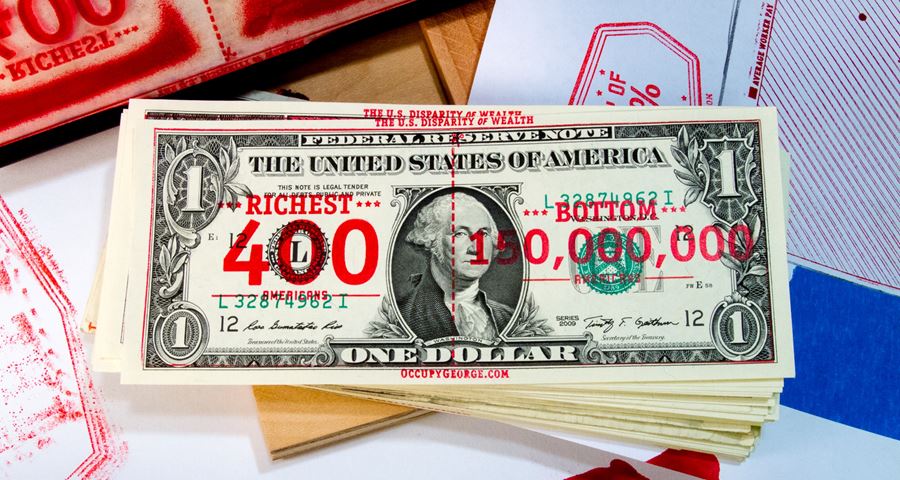
Q:
Take us through your thought process and design thinking when you approached this project?
We took statistics about the great wealth disparity in America and stamped them on top of individual dollar bills, and then we distributed, spent, and even exchanged the bills with fellow occupiers at the protests. We just wanted to get them into as many hands as possible, because the facts alone speak for themselves.
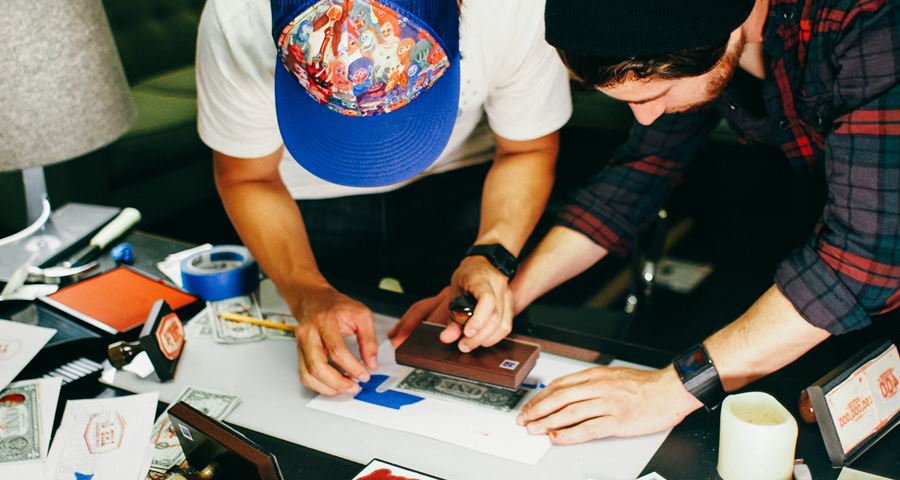

Q:
You must have experienced many obstacles whilst working on this project due to the illegality of marking money. How did you manage to get around this?
Well technically the stamps aren’t illegal, since they’re not changing the denomination of the bills or rendering the bills unfit to be spent (i.e: by covering up the serial number).
That said, we didn’t know this until after the fact, and definitely had some concerns about legality issues. However what kept us going was passion for the cause and a sense of purpose that helped us override whatever fear we had about potential repercussions.
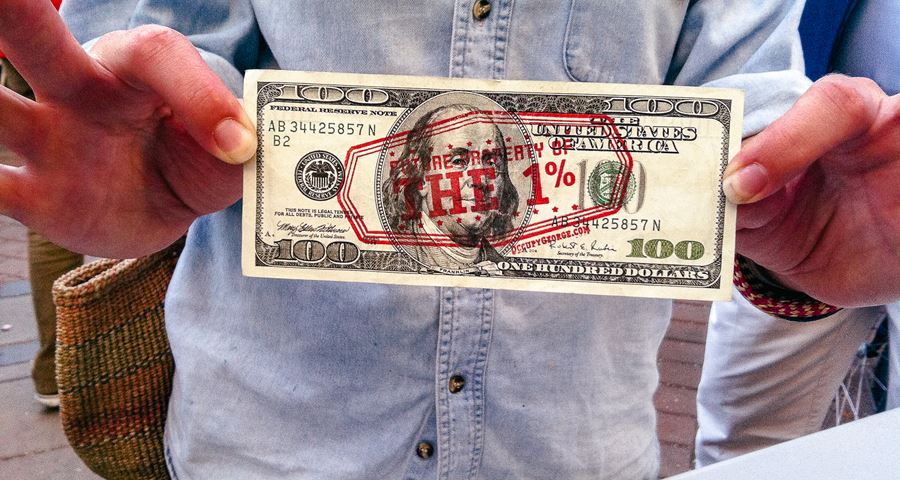
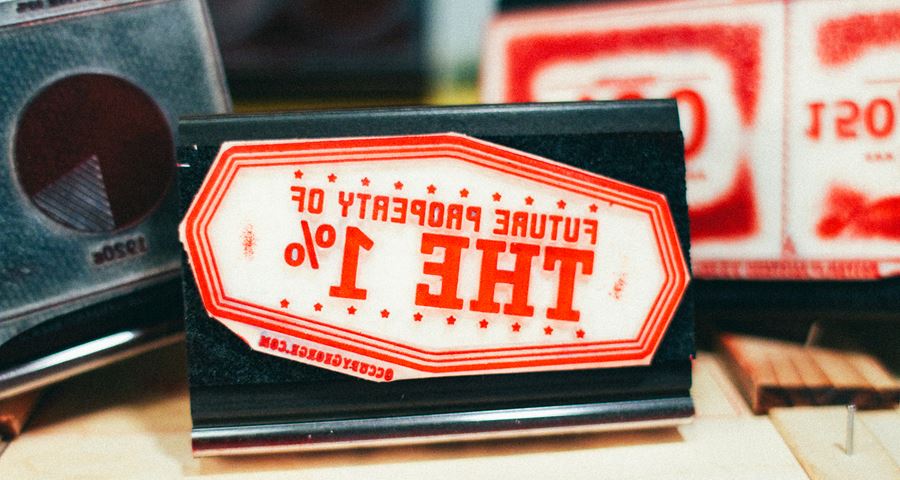
Q:
Take us through some of the infographics about income inequality on the bank notes and what they mean?
We designed the infographics to be as straight forward as possible, so hopefully they don’t need too much interpretation. One shows that the richest 400 Americans have as much wealth as the bottom 150 million. Another shows the huge disparity of income between CEOs and employees.
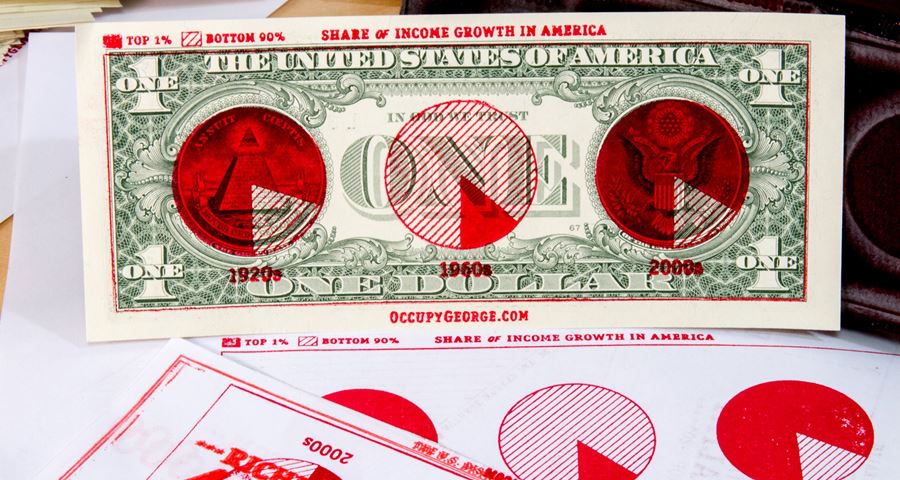
Q:
How have people reacted to your work?
This success of this project would not have been possible without the Internet. What started out in a one-bedroom apartment quickly spread, reaching millions of people not just at home but overseas. We received a lot of emails from people who supported our project. Suddenly, two guys who wouldn’t categorise themselves as radical activists had somehow thrown themselves into the middle of a dialogue about the future of this country.
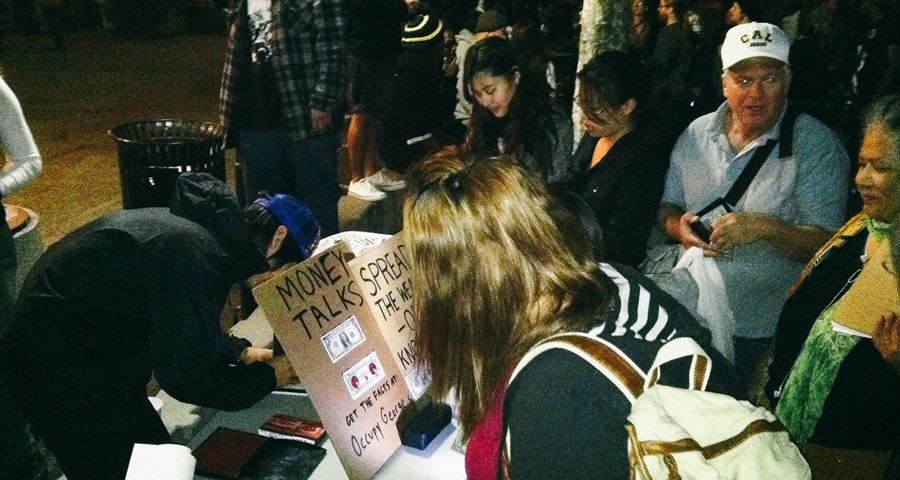
Q:
You’ve explored similar projects with other currencies, such as the £5 note, which was featured in the Disobedient Objects exhibition at the Victoria & Albert Museum in 2015. Did you notice any similarities or differences with this project and Occupy George?
What’s neat about this project is that virtually every currency has similar constraints in terms of being a limited canvas with pre-existing designs to work with. We had a blast with Occupy Liz, in terms of delving in and learning about the wealth disparity in the UK (spoiler alert: it’s just as bad as the USA). We’d love to continue creating Occupy bills on other currencies!
Q:
In what ways has social media changed protest today?
We were fortunate to have this project go viral, thanks in part to social media. However the reality of our fast-moving, A.D.D-ridden culture is that the media devours stories and spits them out a few days later, moving on and rarely looking back.
Part of what made the Occupy movement so powerful is that it operated like an open source network. Its non-hierarchical approach empowered everyone and forced collaboration. In the case of Occupy George, all of our assets are freely available online. And we encourage future creative efforts to do the same. So whether you’re an artist, creative, writer, musician, hacker, culture jammer, or never-say-die-er: it’s time to work together to help overturn a rotten system and bring about change that can work for the masses and not just for a spoiled few.
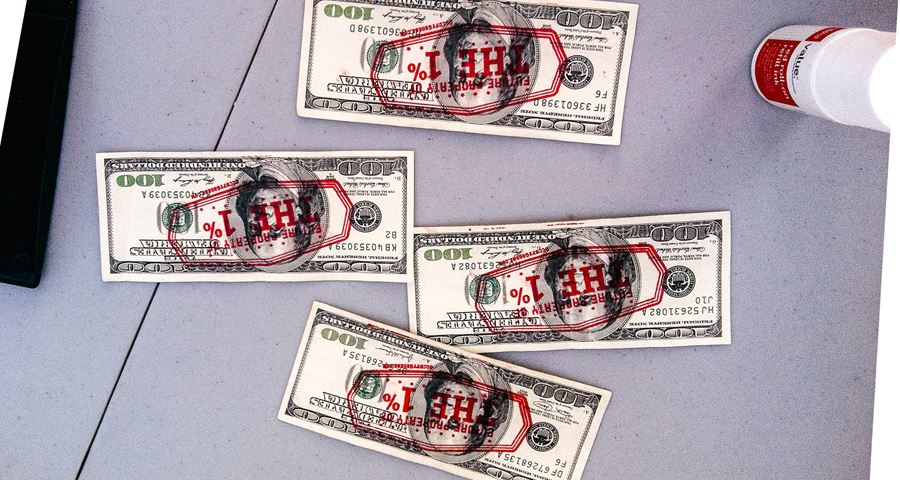
Q:
What’s the one thing you’d like people to remember about your design when they leave the Hope to Nope exhibition?
Every dollar you spend is a vote! Decorate your dollar with a fact or stat and this allows the dollar bill to amplify!
Q:
Finally, if you had one piece of advice for a young graphic designer starting today what would it be?
If the Occupy George project has taught us one thing, it’s that anyone can be a catalyst for change. We’re just two semi-delusional dudes that followed through on a nutty idea, and we eagerly await the next wave of influential projects, artworks, and movements that will ignite the world.

Find out more